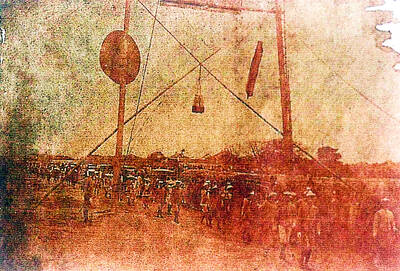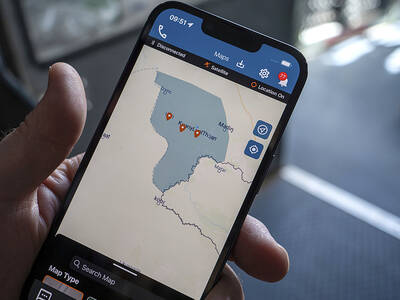Adecade ago, filmmaker Pedro Almodovar took a photograph of El Golfo beach in Lanzarote. When he got the pictures developed, he could just make out two tiny figures standing on the sand. Intrigued, he had the shot enlarged, and revealed a couple locked in a tight embrace, lost in the landscape.
The image, which he called The Secret of El Golfo, niggled away at him for years, eventually inspiring the story that would become Broken Embraces, his latest film, which goes on general release next month. Although most of the action takes place in Madrid, the scenes shot in Lanzarote are crucial to the plot and set the tone for the whole film.
In Broken Embraces, the two main characters, Lena and Mateo, played by Penelope Cruz and Lluis Homar, stand on the same spot. He takes a photograph and Lena embraces him from behind, sheltering from the wind. I went to Lanzarote and stood there too.
Striated cliffs in shades of burgundy, russet and ochre frame a beach where wild waves crash on to the shore, with what looks like a slick of green paint splashed across the charcoal sand. It is the most extraordinary sight, and it is hardly surprising that Almodovar didn’t notice the couple.
“It was like in Antonioni’s movie Blow Up, when David Hemmings takes the picture in the park and doesn’t see the body by the bushes until he develops the film in his darkroom,” said the director when I met him later in Madrid. “The camera lens sees more than the naked eye.”
The beach is actually a volcanic crater eroded by the sea, and the green stain is a lagoon, linked to the ocean by lava tubes hidden under the sand. The color comes from the algae that flourish in a peculiar ecosystem created by the high salt content of the water and the composition of the rock. If you sift through the stones glinting in the sunlight on the beach, you might find crystals of olivine, the green mineral used as a gemstone. But you have to be patient and look very carefully: like the embracing couple, they are not visible at first glance.
“I’d gone to Lanzarote shortly after my mother died,” said Almodovar, “and the colors of the island seemed to reflect how I was feeling. I found it somehow soothing — not just the blackness, more the soft tones of red, green and brown.”
I drove away from El Golfo along a road flanked by huge volcanic boulders, and turned north into La Geria, the wine-producing valley that Almodovar filmed from the air as the main characters drove across it in their red hatchback.
The slate-gray, gently undulating terrain is scored with thousands of shallow circular hollows, each housing a single green vine protected by a semicircle of basalt rocks. I got out of the car and gazed at the perfect pattern, which looked like an immense art installation. I half expected to see the land artist Richard Long trudging towards me.
“I was knocked out by La Geria when I first saw it and knew that I would use it in a film one day,” Almodovar told me. That was in 1985, when he went to Lanzarote to have a rest before shooting The Law of Desire.
Back then, he stayed in a bungalow on Famara beach in the northwest of the island, which is where I headed next, as it is also a location in Broken Embraces.
Since my arrival on the island, I had noticed that the very mention of Famara seemed to make people come over all dreamy and misty-eyed. I got the impression that it was the sort of place where people come for a week and never get around to leaving. The long, curving bay, backed by dusky pink cliffs, provides perfect conditions for surfing, windsurfing or kitesurfing, depending on the vagaries of the wind on the day. There is high-quality tuition on offer and professionals, including kitesurfing world champion Kirsty Jones, can often be seen training there.
In the film, Lena and Mateo stay, as Almodovar did, in a bungalow in holiday village Bungalows Playa Famara. There are scenes in the reception area. When I walked in, I was a bit surprised to see that the receptionist was the person who appears in the film. “Pedro asked me to play myself,” said Lyng Dyrup, originally from Denmark, who turned out to be the manager of the complex. “It was hardly a stretch, particularly as I’ve been here for more than 20 years.”
Lyng told me that they had filmed in bungalow number two, in the row nearest the beach. I let myself into the semicircular building and found myself in the living room where one of the most poignant scenes takes place, with the couple on the sofa, watching television.
“This is where the title, Broken Embraces, comes from,” Almodovar told me. “They are watching Rossellini’s film Voyage to Italy, in which archaeologists find the entwined skeletons of a couple buried by lava, together for ever. Lena cuddles up to Mateo, and he sets the camera and takes a photo of them, unaware that their bliss will soon be shattered — and the photo torn to shreds.”
Back in reception, I asked Lyng what she thought of the film. “You need to see it more than once, because it has so many layers,” she replied. “It’s really more like a book than a film — a book you can’t put down, because you are totally absorbed by the story and the characters.”
I wandered down to the beach and watched surfers riding the waves, children flying kites and dogs dementedly chasing balls. The scene is remarkably similar to one near the end of the film, when all this carefree activity signifies an optimistic new beginning for one of the characters.
Earlier in the film, Lena and Mateo sit on the sand, framed by black rocks that shield them, like the vines, from the wind and the outside world. “Famara is a place of refuge, which is a key concept in the film,” said Almodovar.
Cesar Manrique, the visionary artist, architect and environmentalist whose influence is seen all over the island, spent his childhood holidays in Famara and always said it was his favorite place. Born in Arrecife, the capital of Lanzarote, in 1919, he lived in Madrid and New York before returning to the island in 1966. Passionate about his homeland, he campaigned for the introduction of regulations that saved Lanzarote from the ravages of rampant development. High-rise buildings are prohibited and there are no roadside advertising billboards.
He also designed a series of extraordinary buildings which accentuate the unique geology of Lanzarote and are now its main tourist attractions, as well as making funky wind sculptures to adorn roundabouts across the island.
“Lanzarote is like an unframed, unmounted work of art,” he famously said, insisting that anything manmade had to be integrated into the landscape.
“Broken Embraces is a total homage to Manrique,” Almodovar told me. “I met him on that first trip back in the ’80s, and he took me all over the island and showed me his Lanzarote.”
Manrique’s home at the time, Taro de Tahiche, is built into the boulders in a lava field. He was so amazed to spot a fig tree growing up from the blackness that he decided to build a house around it. Now a foundation dedicated to his life and work, its ground floor is an exhibition space with works by his renowned contemporaries, including Tapies, Millares, Picasso and Saura, but it is the view framed by the huge windows that draws the eye. Basalt steps lead down to a turquoise pool and five lava bubbles linked by passages in the volcanic rock. It looks more like a groovy nightclub than a home. “Oh yes, I went to some pretty wild parties there,” remembered Almodovar, laughing.
Manrique died in 1992, at 73, in a car accident at the roundabout next to Taro de Tahiche, which features one of his wind sculptures. Almodovar used the same roundabout for a crash in Broken Embraces, but was unaware of its sinister connotations. “I chose it because I loved the sculpture on it, and it was only afterwards that I read in the local newspaper that Manrique had died there.”
Almodovar said that it was one of many strange coincidences that happened while they were filming. “There was a special atmosphere on the shoot. Everyone involved said they felt a really positive energy — and believe me, that is not always the case. And the whole crew said they had never slept so well, including me.” I agreed with him on that. The day after I arrived, I woke to the distant sounds of a donkey braying and a cockerel crowing, feeling totally refreshed. I hadn’t slept so well for years.
I was staying at the Finca de Arrieta, an eco-retreat on the northeast coast, between the mountains and the sea. The small complex, built in the local basalt stone, is so low-rise it is barely visible from the coast road, its existence given away only by the palm trees blowing in the breeze. As well as a cottage and a villa, there are three yurts, all with a sort of Moroccan/Indonesian feel. My yurt was a sumptuous structure lined in pink silk with a marble floor, and a wetroom and kitchen just outside. I made a pot of coffee and an omelet with organic eggs from the finca’s chickens and huge spring onions from the garden, before having a swim in the solar-heated pool.
This mini paradise was created by Britons Tila and Michelle Braddock, who live here with their four children. “We have 30 solar panels and two wind turbines, which provide energy for the whole finca,” said Tila. “Lanzarote has plenty of sun and wind, and there’s no reason why the whole island shouldn’t use renewable energy sources.”
Manrique would be proud, but at the moment Finca de Arrieta is the largest sustainable energy project on the island. We were having dinner right by the sea on the terrace of the Amanecer restaurant in Arrieta, the village just down the road. As we devoured sizzling prawns, Tila pointed out a romantic-looking little cottage a couple of doors away, which they also rent out. “Being so close to the sea, you can fish out of the window if you want. We put a solar panel on the roof there too,” said Tila, dipping fried goats’ cheese into the mojo dips that are traditional throughout the Canaries. “The green one is made with coriander, and the red one with paprika,” said Michelle, topping up our glasses with Bermejo, a delicious local white wine.
The next morning, Tila whisked me off on a tour of the north of the island. We drove high into the hills, through lava fields covered in lichen in soft shades of gold, green and cream. On our left was the Monte Corona volcano, and standing alone on the hillside below it was La Torrecilla, the large house that is used as a clinic in Broken Embraces.
A lava tube runs from the volcano to the sea, billowing out to form caves along the way. In one of these, Manrique created Los Jameos del Agua, a massive grotto that contains a recently restored auditorium, where Broken Embraces had its first screening. “The acoustics there are amazing,” Almodovar later told me.
At the northern tip of the island, Manrique turned an old gun battery on the edge of a cliff into a restaurant and observation point, the Mirador del Rio, where the bar has a curving panoramic window with views across to the island of La Graciosa. Almodovar did shoot a scene in this dramatic setting, but it didn’t make the final cut.
“We organize an annual charity event, the Tres Islas,” said Tila, “when teams swim from La Graciosa over to Lanzarote, climb the cliff near here, then cycle the 60km across the island before sailing across to Fuerteventura.”
The road wound to the south and we drove towards Haria, where Manrique lived for the last few years of his life. Hidden in a lush valley and surrounded by palm trees, it is one of the prettiest villages on the island. We stopped for lunch at La Frontera, a popular family-friendly restaurant with views down the valley, and ate chunks of eggplant with palm honey, and tender lamb chops.
Later on, Tila dropped me off at El Aljibe in the remote village of Los Valles, where I was going to spend my last night. From the outside, it looked like a traditional Canarian farmhouse, albeit a rather chic one. Inside, however, a staircase led down through an archway into an enormous stone space with a vaulted ceiling and mezzanine sleeping area. Originally the underground water cistern for the farm, El Aljibe is now stylishly decorated with paintings and sculptures by renowned local artists, all friends of the owner, who was also close to Manrique and worked with him on some of his projects back in the 1970s.
Sinking into the outdoor Jacuzzi in this incongruously glamorous setting, my mind wandered to the amazing parties you could throw there — but you would need both Manrique and Almodovar on the guest list to really make it swing.
On the Net: Cesar Manrique’s home, Taro de Tahiche, fcmanrique.org; Los Jameos del Agua, centrosturisticos.com; Mirador del Rio, centrosturisticos.com; Spanish Tourist Office spain.info

Desperate dads meet in car parks to exchange packets; exhausted parents slip it into their kids’ drinks; families wait months for prescriptions buy it “off label.” But is it worth the risk? “The first time I gave him a gummy, I thought, ‘Oh my God, have I killed him?’ He just passed out in front of the TV. That never happens.” Jen remembers giving her son, David, six, melatonin to help him sleep. She got them from a friend, a pediatrician who gave them to her own child. “It was sort of hilarious. She had half a tub of gummies,

June 23 to June 29 After capturing the walled city of Hsinchu on June 22, 1895, the Japanese hoped to quickly push south and seize control of Taiwan’s entire west coast — but their advance was stalled for more than a month. Not only did local Hakka fighters continue to cause them headaches, resistance forces even attempted to retake the city three times. “We had planned to occupy Anping (Tainan) and Takao (Kaohsiung) as soon as possible, but ever since we took Hsinchu, nearby bandits proclaiming to be ‘righteous people’ (義民) have been destroying train tracks and electrical cables, and gathering in villages

The wide-screen spectacle of Formula One gets a gleaming, rip-roaring workout in Joseph Kosinski’s F1, a fine-tuned machine of a movie that, in its most riveting racing scenes, approaches a kind of high-speed splendor. Kosinski, who last endeavored to put moviegoers in the seat of a fighter jet in Top Gun: Maverick, has moved to the open cockpits of Formula One with much the same affection, if not outright need, for speed. A lot of the same team is back. Jerry Bruckheimer produces. Ehren Kruger, a co-writer on Maverick, takes sole credit here. Hans Zimmer, a co-composer previously, supplies the thumping

Swooping low over the banks of a Nile River tributary, an aid flight run by retired American military officers released a stream of food-stuffed sacks over a town emptied by fighting in South Sudan, a country wracked by conflict. Last week’s air drop was the latest in a controversial development — private contracting firms led by former US intelligence officers and military veterans delivering aid to some of the world’s deadliest conflict zones, in operations organized with governments that are combatants in the conflicts. The moves are roiling the global aid community, which warns of a more militarized, politicized and profit-seeking trend